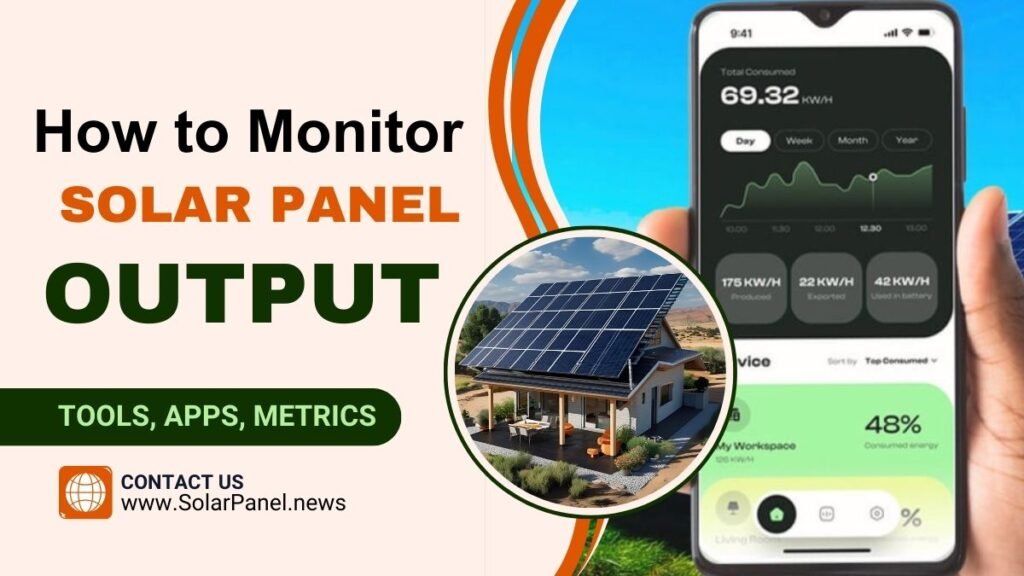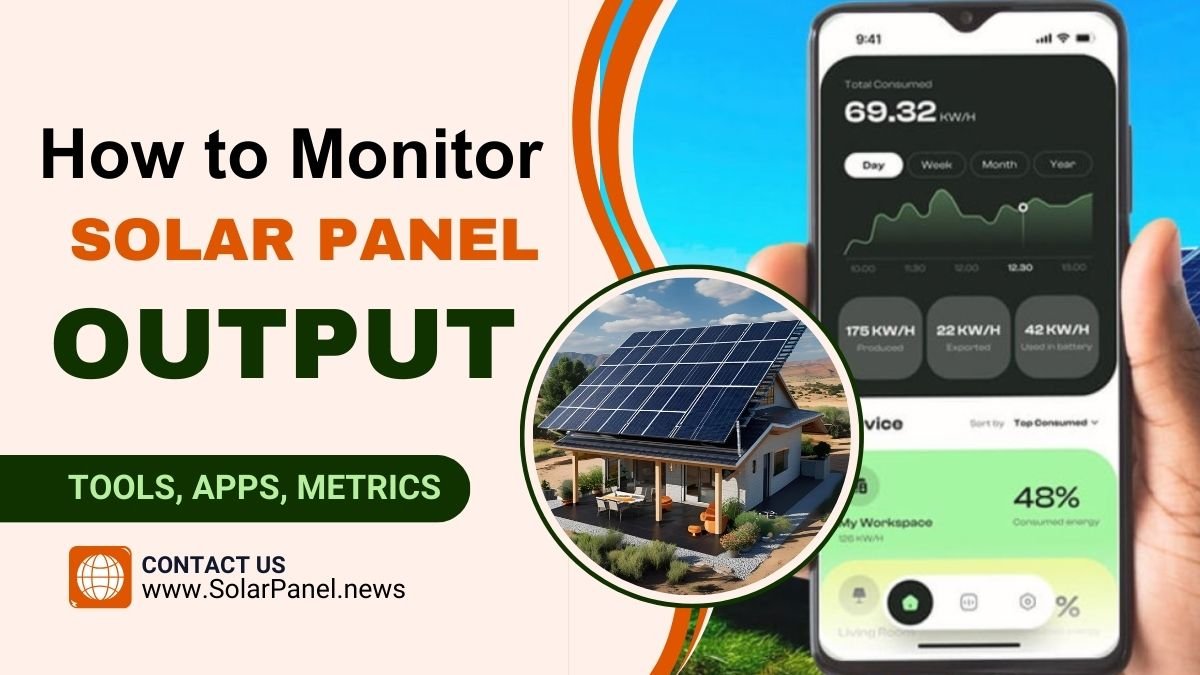Monitoring your solar panel output isn’t just for tech-savvy homeowners or energy nerds, it’s essential for anyone wanting to get the most from their solar investment.
Whether you’re running a large rooftop system or a compact off-grid setup, knowing how to monitor solar panel output can help you detect issues early, improve efficiency, and even increase your energy savings.
In this guide, I’ll share what you need to know about tracking performance, the best tools to use, and tips for smarter monitoring.
Why Monitor Solar Output?
Solar panels are a long-term investment, and tracking their performance ensures you get the most out of your system. Monitoring helps you:
- Detect issues early (e.g., shading, dirt, or panel malfunctions)
- Maximize energy production by identifying inefficiencies
- Save money by ensuring optimal performance
- Track ROI to see how quickly your solar investment pays off
Without proper monitoring, you might miss drops in efficiency that cost you energy and money over time.
Key Metrics to Track
To truly understand how your solar panels are doing, here are the most important solar panel output metrics to keep an eye on:
1. Energy Production (kWh): This is the total amount of electricity your system generates daily, monthly, and annually.
2. Power Output (Watts or kW): Real-time power generation at any given moment, useful for matching usage with production.
3. Irradiance Levels: The amount of sunlight hitting your panels, which directly affects output.
4. System Efficiency: A measure of how well your panels convert sunlight into usable electricity.
5. Performance Ratio (PR): Compares actual energy output to theoretical maximum output under ideal conditions.
How to Monitor Solar Panel Output?
There are two main methods: smart monitoring (automated, often app-based) and manual monitoring (basic, hands-on tracking).

Top Monitoring Tools & Apps
Here are some of the most reliable tools to monitor solar output, for both grid-tied and off-grid systems:
🔧 Hardware-Based Monitoring Systems
- Enphase Enlighten
- Works with Enphase microinverters
- Offers panel-level monitoring and cloud-based insights
- Works with Enphase microinverters
- SolarEdge Monitoring Platform
- Great for large systems
- Real-time performance analysis and mobile alerts
- Great for large systems
- Sense Energy Monitor
- Tracks solar and household usage
- AI-powered data insights
- Tracks solar and household usage
- Growatt Shine Server
- Popular among budget-friendly off-grid setups
- Compatible with various inverters
- Popular among budget-friendly off-grid setups
📱 Solar Monitoring Apps (Smartphone-Friendly)
- PVOutput
- Community-driven platform with API integration
- Ideal for data lovers
- Community-driven platform with API integration
- Solaredge App / Enphase App
- Manufacturer-supported, reliable, and easy to use
- Manufacturer-supported, reliable, and easy to use
- SolarMAN / FusionSolar (Huawei)
- Offers remote troubleshooting and alerts
- Offers remote troubleshooting and alerts
- Home Assistant + Open Energy Monitor
- Great for DIYers and smart home enthusiasts
- Great for DIYers and smart home enthusiasts
Manual vs. Smart Monitoring: Pros & Cons
| Feature | Manual Monitoring | Smart Monitoring |
| Setup Cost | Low (just tools) | Higher (requires hardware) |
| Accuracy | Moderate (human error possible) | High (real-time data) |
| Convenience | Time-consuming | Automatic, remote access |
| Real-Time Alerts | None | Instant notifications |
💡 Verdict: Smart monitoring is best for most users, but manual checks can help DIYers save money.
You can read: 5 Portable Solar Kits Under $500 (Budget Picks).
Installation Tips for Optimal Monitoring of Solar Panel Output
To get accurate and consistent monitoring results:
- Use Manufacturer-Approved Tools: Ensure compatibility with your inverter or panels.
- Secure a Strong WiFi Connection: Especially important for cloud-based platforms.
- Install Sensors in Shaded-Proof Zones: For accurate irradiance and temperature readings.
- Label Wiring Clearly: Especially helpful in troubleshooting and DIY setups.
- Set Notifications and Alerts: Most apps allow push notifications for performance dips.
Note: Consider professional help if you’re integrating smart systems for the first time.
Mini-FAQ: How to Monitor Solar Panel Output
Q: Can I monitor my solar panels from my phone?
A: Yes! Apps like Enphase, SolarEdge, and SolarMAN offer real-time data and alerts directly to your smartphone.
Q: What’s the best free tool to monitor solar output?
A: PVOutput is a popular, free, community-based platform compatible with many systems.
Q: How often should I check my solar panel output?
A: Ideally, once a week. Smart monitoring tools can notify you instantly about any anomalies.
Q: Can I monitor my solar panels without internet?
Yes, basic inverter displays allow offline monitoring, but for detailed analytics and remote access, internet is required.
Q: Are there free solar monitoring apps?
Some platforms like PVOutput, offer free tiers with limited features. Most advanced tools require a paid subscription.
Q: How often should I check my solar panel output?
Daily checks aren’t necessary, but weekly reviews can help spot trends or issues early.
Q: Do all solar panels have built-in monitoring?
No, only systems with compatible inverters or add-on devices offer full monitoring capabilities.
Q: What does low solar output mean?
Low output could be due to shading, dirt, equipment failure, or poor system design. Monitoring helps identify the cause quickly.
Featured Post: Do Solar Panels Work in Snow Country or Winter Season?
Final Advice
Monitoring your solar panel output ensures long-term efficiency and savings. Whether you choose a smart app or manual tracking, staying informed helps you maximize your solar investment.
🚀 Ready to Optimize Your Solar System? Check out the latest solar monitoring tools today!







